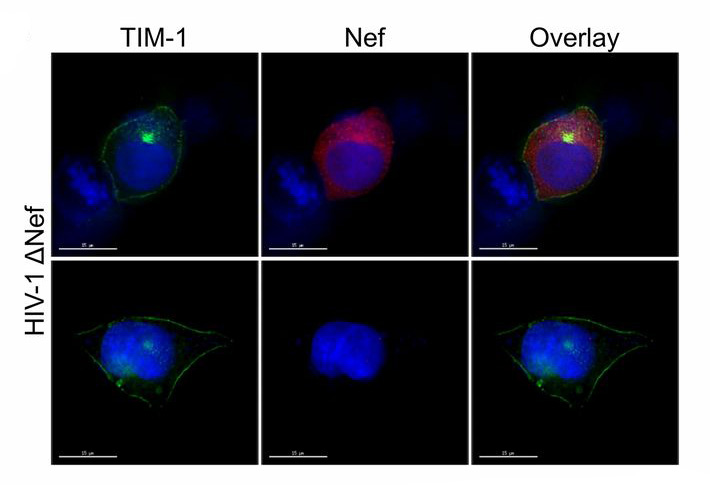
 中央研究院 生物化學研究所
中央研究院 生物化學研究所
The T cell Ig and mucin domain (TIM) proteins inhibit release of HIV-1 and other enveloped viruses by interacting with cell- and virion-associated phosphatidylserine (PS). Here, we show that the Nef proteins of HIV-1 and other lentiviruses antagonize TIM-mediated restriction. TIM-1 more potently inhibits the release of Nef-deficient relative to Nef-expressing HIV-1, and ectopic expression of Nef relieves restriction. HIV-1 Nef does not down-regulate the overall level of TIM-1 expression, but promotes its internalization from the plasma membrane and sequesters its expression in intracellular compartments. Notably, Nef mutants defective in modulating membrane protein endocytic trafficking are incapable of antagonizing TIM-mediated inhibition of HIV-1 release. Intriguingly, depletion of SERINC3 or SERINC5 proteins in human peripheral blood mononuclear cells (PBMCs) attenuates TIM-1 restriction of HIV-1 release, in particular that of Nef-deficient viruses. In contrast, coexpression of SERINC3 or SERINC5 increases the expression of TIM-1 on the plasma membrane and potentiates TIM-mediated inhibition of HIV-1 production. Pulse-chase metabolic labeling reveals that the half-life of TIM-1 is extended by SERINC5 from <2 to ∼6 hours, suggesting that SERINC5 stabilizes the expression of TIM-1. Consistent with a role for SERINC protein in potentiating TIM-1 restriction, we find that MLV glycoGag and EIAV S2 proteins, which, like Nef, antagonize SERINC-mediated diminishment of HIV-1 infectivity, also effectively counteract TIM-mediated inhibition of HIV-1 release. Collectively, our work reveals a role of Nef in antagonizing TIM-1 and highlights the complex interplay between Nef and HIV-1 restriction by TIMs and SERINCs.
